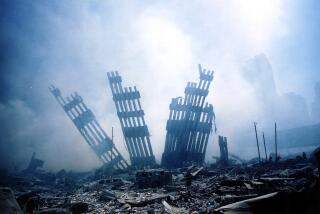Saudi Arms Sale Is Blocked Without Regard for Facts
U.S. and Saudi relations are often damaged by careless misunderstandings. Now that the Reagan Administration has been forced to bow to congressional pressure and withdraw--at least temporarily--its proposal to sell 1,600 Maverick air-to-ground missiles to Saudi Arabia, it has become even more important to understand the circumstances surrounding the role of the Saudi air force in reacting to the Iraqi attack on the U.S. frigate Stark.
To put it bluntly, the sale was withdrawn because several members of Congress rushed out to attack Saudi Arabia, partly with disregard for the facts and partly in reaction to a reflex courting of pro-Israel lobbying groups.
At a time when both nations vitally need to cooperate in defending the Persian Gulf, these actions have served only to divide the United States and Saudi Arabia.
Blocking this sale, or a second proposal to sell 12 more F-15s to the Saudi air force, will not affect the security of Saudi Arabia and may well force it to again turn to Europe for help. The only thing that we can accomplish is to embarrass the Saudis--something that we simply cannot afford to do. We have done ourselves enough harm in the gulf area. We now need to do ourselves some good.
The picking point in the debate has been the Saudis’ refusal to defend the Stark from an Iraqi warplane’s attack. But logs from American E-3A AWACS planes flying patrol in the gulf--as well as from the White House, the State Department, the Pentagon and the Saudi government--show this not to have been the case.
The American AWACS planes have a Saudi controller on board who is in constant touch with the Saudi operations centers on the ground. As part of the rules of engagement established by the United States long before the attack on the Stark, Saudi Arabia provides protection for the U.S. planes but not for U.S. Navy ships operating in the gulf.
During the day, the Saudi air force provides a constant fighter escort to protect the AWACS planes and Saudi air space. But because Iran has so few remaining operational fighters, and most are limited in capability, the Saudi fighters do not fly escorts at night. They instead remain on the runway at Daharan in combat-ready status.
The attack on the Stark took place at 10:06 p.m., a time when the AWACS plane would normally have been airborne without Saudi fighter escort. But, on seeing that the Iraqi warplane was on a course taking it near the E-3A, Saudi fighters had been scrambled to provide protection.
After locking his missile-attack radar onto the Stark, the Iraqi pilot fired with only five seconds of warning. There was never any chance that Saudi fighters could have intercepted him before the attack. The Saudi fighters were not even near the Stark, and they were never requested to take any action to protect the ship before the Iraqi attack.
Reports that Saudi fighters refused to come to the aid of the Stark are simply totally false. The issue never arose. What did happen, however, is that after the attack one of the Saudi fighter pilots asked if the fighters should intercept the Iraqi jet. Neither the U.S. officers nor the Saudi controller aboard the AWACS plane had the authority to authorize this intercept because it would have been a violation of the U.S.-Saudi rules of engagement. It is also important to note that such an intercept could have done nothing to protect the Stark.
If the Saudi pilots had intercepted, they would almost certainly have made a tragic situation worse. The last thing on Earth that anyone needed, after the damage was done, was more political complications.
But the political complications did arise when Congress began using a misleading version of the Saudi response to the Stark attack as a means to undermine the latest round of U.S. arms sales to Saudi Arabia and, more important, any U.S. military cooperation with friendly Arab states in the gulf area.
Neither of these sales would involve the slightest risk to Israel. The Maverick sale was agreed to in 1984, and the only issue was whether the Saudis should be allowed to buy a slightly improved type of missile over the one authorized three years ago.
The proposed sale of F-15s would involve no build-up of the Saudi air force. It is being proposed only because the production line for the model in question, the F-15C/D, is closing and the Saudi air force has already lost five aircraft. The purchase of 12 more would be an attrition reserve, with the surplus to be kept in the United States. This would allow the Saudi air force to retain 60 operational F-15s.
With luck, we may not need to use Saudi air bases and facilities to provide air cover over our ships in the Persian Gulf. With luck, Saudi Arabia may never need a strong air force to protect itself against Iran. Luck, however, is not a substitute for U.S. and Saudi cooperation.
More to Read
Sign up for Essential California
The most important California stories and recommendations in your inbox every morning.
You may occasionally receive promotional content from the Los Angeles Times.










